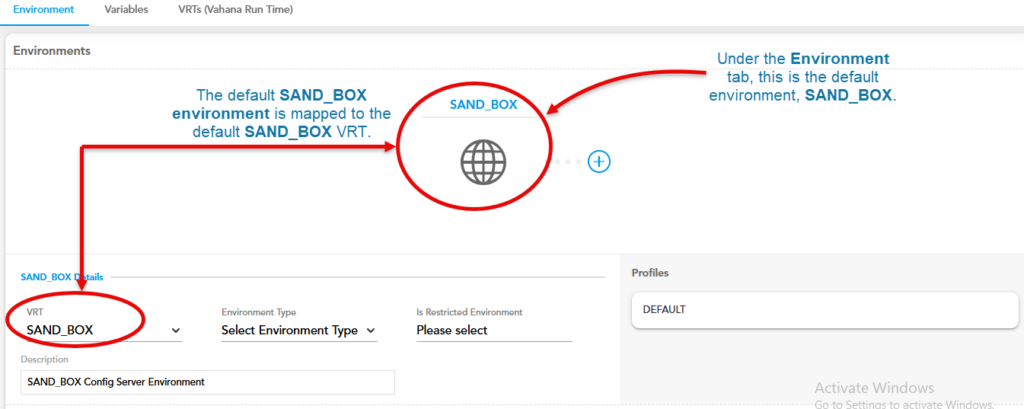An Introduction to Environments
Overview
On the Vahana platform, you can use the Environments module to create three following items:
- Environment: – The Vahana cloud offers the SAND_BOX environment by default. Apart from SAND_BOX, you can create other environments. You can create an environment for carrying out application development, testing, and deploying the application. To create an environment, the Environment module provides three types:
- Developer
- Test
- Prod
Based on your functional requirement, you can choose a specific environment type.
- VRT: – The term VRT stands for Vahana Run Time. VRT is a runtime environment or framework where an application runs. When you create a VRT, you can map it to different environments to execute, test, and deploy the applications.
- Variable: – Under an environment, you can create multiple variables. These variables can have multiple values, such as a URL to a published API or a random value. You can use values of these environment variables for several purposes. You can share the environment variables to other users or application environments.
Note:- When you access the Environments module for the first time through the middleware application, it provides a default environment, SAND_BOX, and a default VRT with the same name, SAND_BOX. The SAND_BOX environment is automatically mapped to the SAND_BOX VRT.

You can access the Environments module as follows:
Accessing Environments Module
To access the Environments module:
- On the Vahana portal’s dashboard, click View All to display the Applications page.

- On the Applications page, search and find the middleware application (for example, Demo_App1) to access the Environment Manager module.

- After you find the middleware application, double-click it to display the middleware portal’s dashboard.

- On the middleware portal’s dashboard, find the Environments tile and then click it to access the Environment Manager module’s home page.

Was this article helpful?
YesNo
